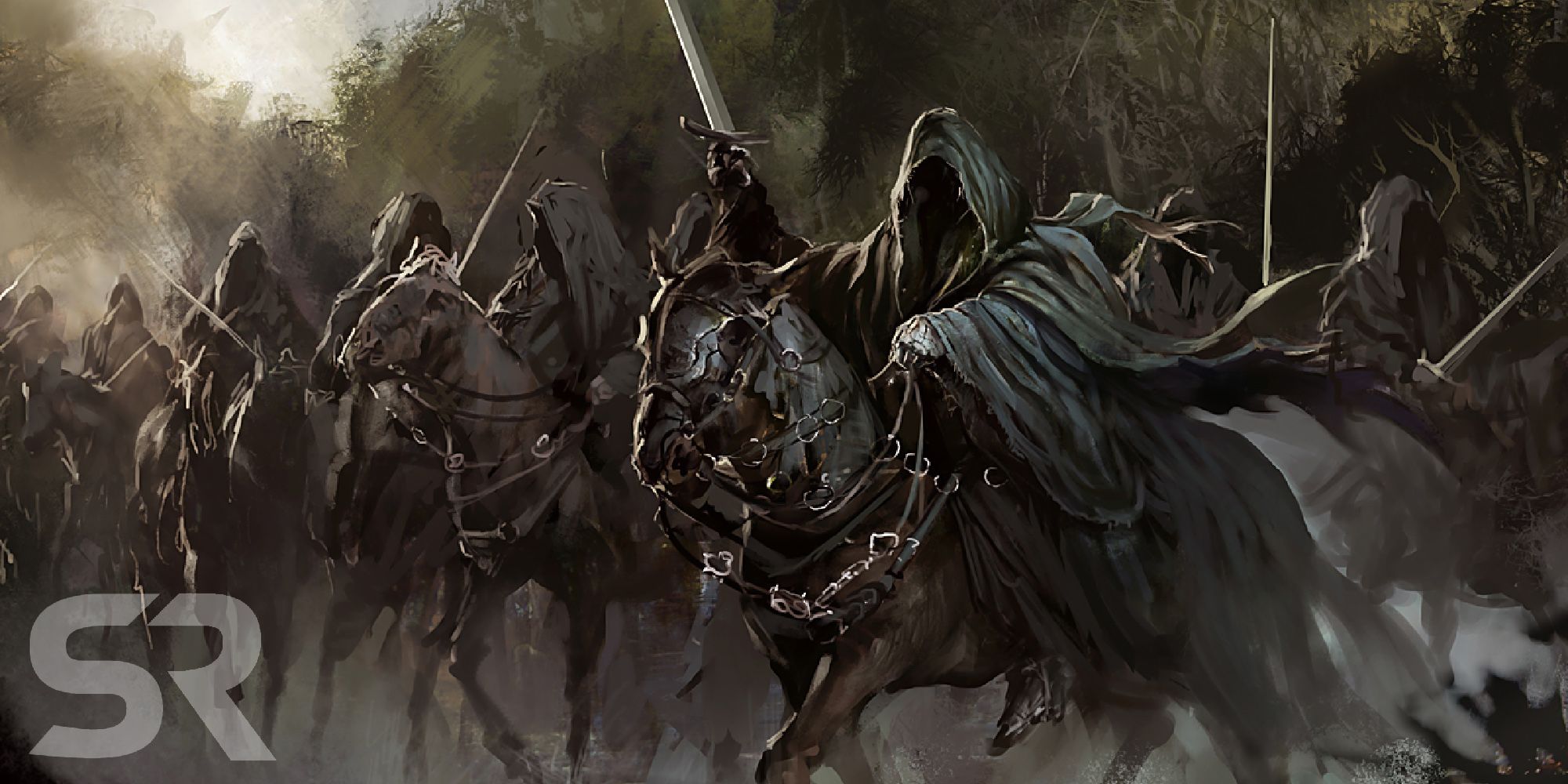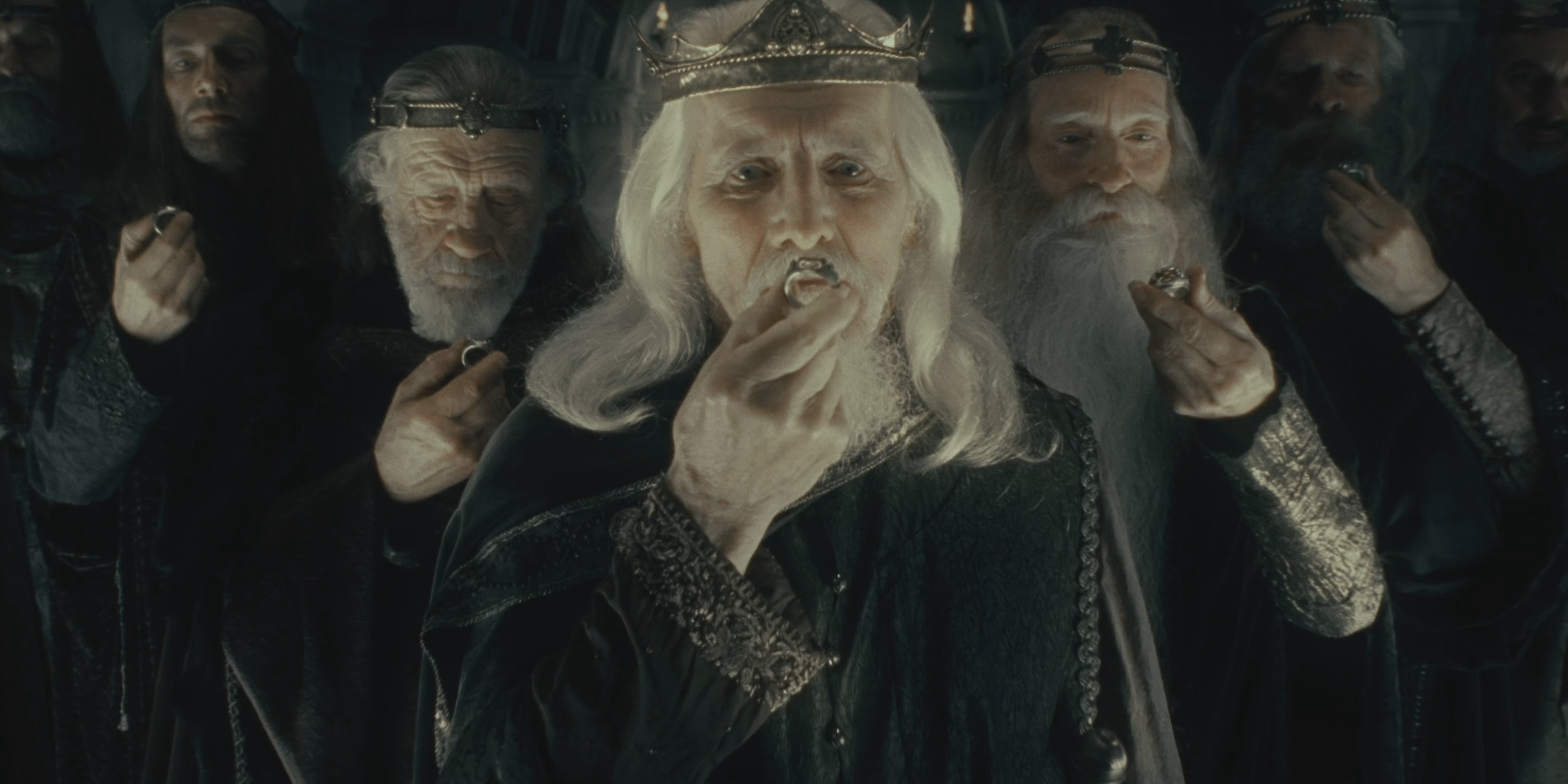What became of the Nazgûl after Sauron and the One Ring were destroyed in The Lord of the Rings? In J.R.R. Tolkien's most famous Middle-earth adventure, Sauron is the undisputed arch-villain, orchestrating events from his perch atop Barad-dûr. Alas, Sauron is nothing more than a disembodied floating eye of fire. While in non-corporeal form, the Dark Lord requires an army of minions and servants to do his bidding, and chief among these agents are the Nazgûl, commonly known as Ringwraiths. The origin of these villains is almost as dark as their fashion sense. In the Second Age, Sauron tried to ensnare elves, dwarves and men alike by gifting them Rings of Power. Naturally, men proved most susceptible, and nine kings fell under Sauron's sway, gradually transforming into the dreaded, deathless Nazgûl.
The Nazgûl's presence is greatest in The Fellowship of the Ring, with the Nine following Frodo and his companions across Middle-earth, hunting for the Ring that would bring their master back to full strength. Although their role in The Lord of the Rings is diminished after the Nazgûl are washed away in the Fords of Bruinen near Rivendell, all of them survive the watery attack and return for the final battle. One of the Nazgûl, the Witch-king of Angmar, is defeated by the tag-team of Eowyn and Merry, but the fates of the remaining 8 Ringwraiths are more ambiguous. After the One Ring was cast into the fires of Mount Doom and Sauron destroyed, what happened to his most formidable servants?
In order to understand the fate of the Nazgûl, it's vital to examine their link to Sauron. The Dark Lord used his "One Ring to rule them all" to corrupt the nine kings who accepted Sauron's other Ring of Power. Although this effectively rendered the kings immortal, the Nazgûl would be intrinsically bonded to their master. When Sauron was at his weakest, therefore, the Nazgûl became inactive, but when Sauron's power began to gather again, the Nazgûl rise with him. Naturally, this means that after the One Ring is finally destroyed by Frodo and Sam, the Nazgûl are no more. There is nothing to bind their wraith-like souls to the mortal realm - the magic is broken.
Sauron himself isn't technically killed by the Ring's destruction. Tolkien describes the villain's power as being so completely devastated that none could ever foresee his rising again, but the possibility that Sauron's spirit still exists in some minuscule form remains open. The Nazgûl aren't so lucky. The melting down of the One Ring not only destroys the trinket itself, but also everything made using its power, cutting the Nazgûl off from the living world. Although the Ringwraiths survived Sauron's initial defeat at the hands of Isildur, the Ring still existed during this period, which might explain why the Nazgûl were able to return alongside their lord in time for The Fellowship of the Ring.
The Nazgûl's ending is far clearer in the book version of The Return of the King than in Peter Jackson's Oscar-winning movie adaptation. After the Ring hits lava in the movie, the audience are only afforded a brief shot of the Nazgul's Fell Beasts being pelted with debris from the rapidly-crumbling Mordor, but there's no indication of whether they live or die. In Tolkien's novel, the Nazgûl are indeed attacked by the falling landscape, as the author describes the Ringwraiths as being "caught in the fiery ruin," but he also writes that the Nazgûl "crackled, withered and went out" which gives a far more definitive answer to the fates of these Lord of the Rings villains.


